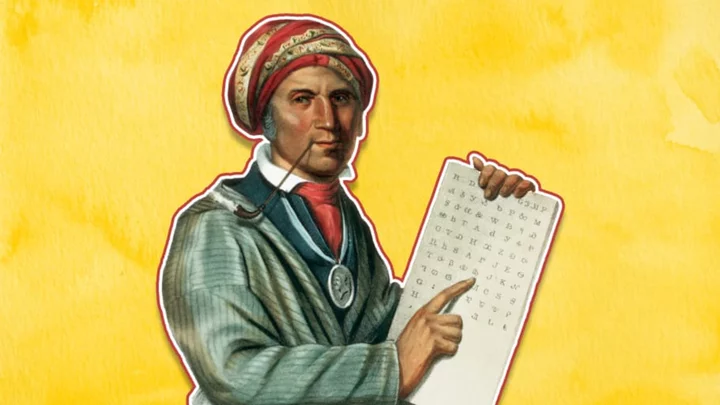Geoffrey Chaucer is considered one of the most formative writers in the English literary canon. His work—written at a time when English literature was beginning to take shape—spanned poetry and prose and ranged from the humorous to the scientific. Here are six fascinating facts about Chaucer’s life and writing.
c. 1342/43, England | October 25, 1400, London, England | ‘Book of the Duchess,’ ‘The Canterbury Tales’ |
1. Geoffrey Chaucer was captured and ransomed for £16 before the age of 20.
In 1359, Chaucer participated in the Reims campaign, a military effort by King Edward III of England to annex parts of France by force. In the process, Chaucer—who was a member of the household of the Countess of Ulster, the wife of one of Edward III’s sons, and then a squire—was captured by the French. In the aftermath of the siege, during negotiations to ransom prisoners on both the French and English sides, Edward paid £16 (the modern equivalent of about £8000, or nearly $10,000) for Chaucer’s release.
2. Chaucer has sometimes been called the “Father of English Poetry.”
Two centuries before Shakespeare (whom most people today would probably think of first) there was Chaucer, who was called the “Father of English Poetry” as early as the end of the 1300s. The title is well-deserved: While many of his contemporaries (including his friend John Gower) wrote in English in addition to languages like Latin and French, Chaucer wrote exclusively in English. Medieval scholar Simon Horobin writes that Chaucer’s use of English instead of Latin—the language of international communication—was part of an increase in the use of the vernacular because English was coming to be regarded as England’s “mother-tongue.”
3. He wrote in Middle English.
It might surprise many to know that Shakespeare, who lived and wrote in the 16th and 17th centuries, actually wrote in early modern English. Chaucer, writing in the 1300s, used an earlier form known as Middle English, which had replaced Old English/Anglo-Saxon after William the Conqueror invaded England from Normandy in 1066.
As a result of the Norman Conquest, the form of English that Chaucer inherited, spoke, and wrote was heavily influenced by French (according to Britannica, some 10,000 French words made their way into English), which had mixed with the Germanic Anglo-Saxon previously spoken in England. It looks like a foreign language to our modern eyes, as shown by the very first lines of Chaucer’s most famous collection of stories, The Canterbury Tales, about a group of pilgrims who engage in a storytelling competition to pass their time on the way to Canterbury Cathedral: “Whan that Aprill with his shoures soote / The droghte of March hath perced to the roote” (“When April with its sweet-smelling showers / Has pierced the drought of March to the root”). You can see a historically based Middle English performative reading of these lines above.
4. Much of Chaucer’s work is humorous.
Contemporary readers sometimes find it alarming to discover that writers who lived centuries ago had a sense of humor that is legible today. Chaucer is a case in point. Many of his works are frequently funny and salacious. “The Miller’s Tale,” for example, features a woman who tricks an unwanted suitor into kissing her backside instead of her lips.
5. Chaucer parodied himself in his most famous work, The Canterbury Tales.
One of the most humorous in Chaucer’s book of tales is the one about himself. Chaucer wrote himself into The Canterbury Tales as a character, with one key and hilarious difference: The Chaucer-character in the books cannot tell a tale to save his life.
In “The Tale of Sir Topas,” Chaucer-in-the-book tries to tell a heroic tale about a knight. However, the tale is so long-winded—Chaucer-the-character spends most of it describing the knight’s looks and how he puts his armor on—that the other pilgrims lose patience waiting for him to get to the point and cut him off before he finishes. Apparently, Chaucer the author thought that fictionalizing himself as a man incompetent at telling stories would be a funny and ironic move.
6. His grave inspired a famous memorial to writers in Westminster Abbey.
For the last few years of his life, Chaucer took a lease in residence at Westminster Abbey with a pension granted him by King Richard II. He died while in residence and was entombed within the abbey. About a century and a half later, in 1556, he was exhumed from his unmarked tomb and re-interred in a marble tomb with a monument in the Abbey’s south transept.
Edmund Spenser, a 16th-century poet who wrote in an archaic style imitative of Chaucer, requested to be interred beside the Father of English poetry and was entombed in the wall beside Chaucer. This seems to have started a trend: Ever since, a crop of tombs and monuments to writers have sprung up in the south transept, which is now known as Poets’ Corner. The concept even traveled across the Atlantic to the U.S.: There is a Poets’ Corner with monuments to American authors in the Cathedral of St. John the Divine in Manhattan.
Related Tags
POETRY WORK LITERATURE LANGUAGE FUNNY WRITING SHAKESPEARE FACTS AUTHOR History Home / AUTHORS








